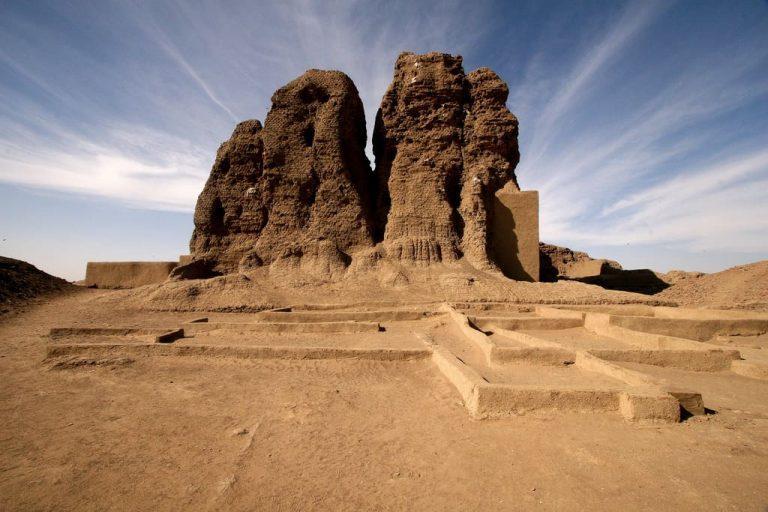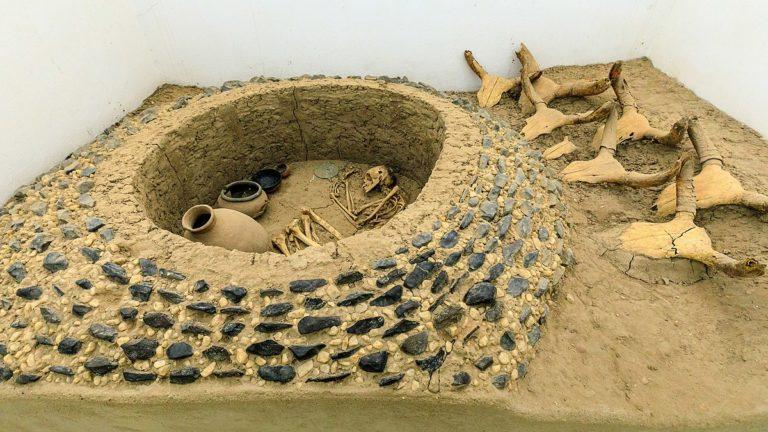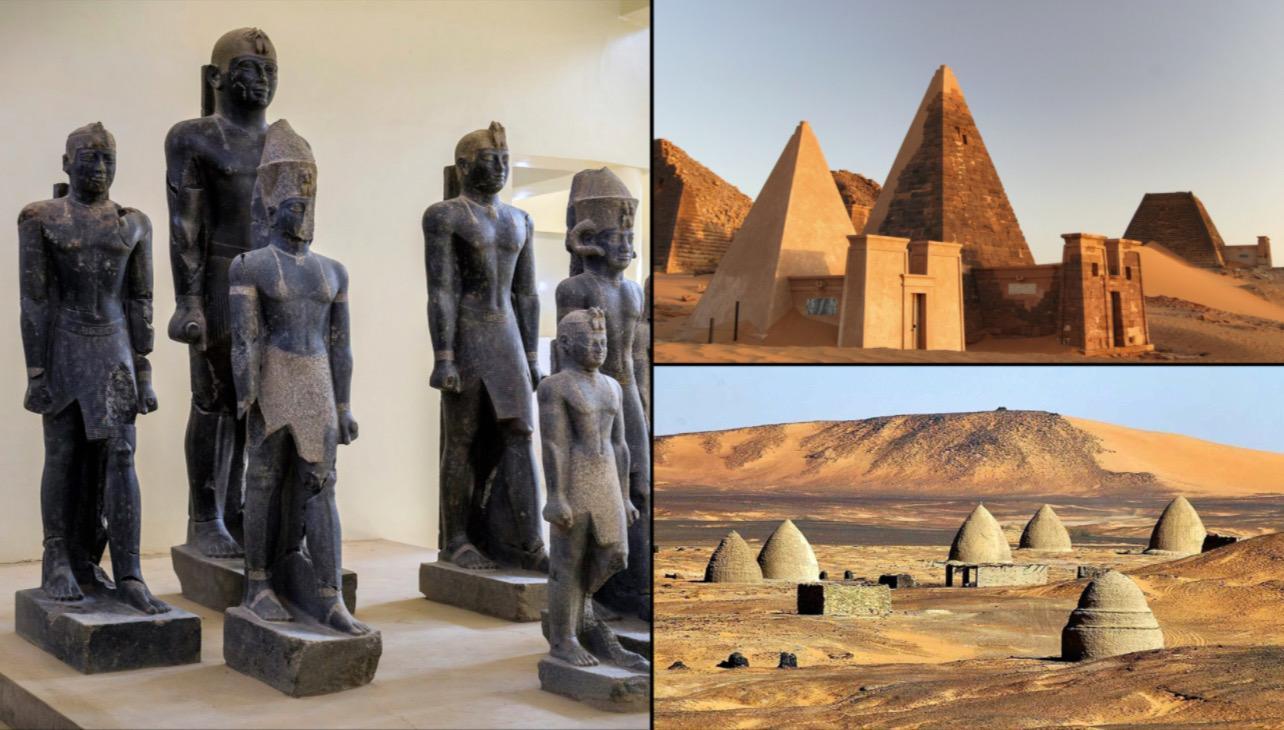Kerma, also known as Karmah, is a historically significant archaeological site. It is the old capital of Kerma, an ancient country located in the Dongola Reach (above the 3rd Cataract of the River Nile in Sudan).
All of these legends date back over 5500 years. Kerma is one of the most important archaeological sites in ancient Nubia (ancient region in northeastern Africa: extending from the Nile river valley eastward to the shores of the Red Sea, southward to Khartoum or present Sudan and finally westward to the Libyan desert).

Before we get into the details of modern-day Kerma, let’s take a look at what the Kerma Culture was like and what the Kerma Kingdom was like. This civilisation flourished from 2500 BCE to 1500 BCE, as we were conversing. Although it was primarily headquartered in Upper Nubia, it eventually spread to Lower Nubia and the Egyptian border.
The principal site, which serves as the kingdom’s core, consists mostly of a massive town as well as a cemetery with large tumuli.
There were several settlement eras in the Kerma Kingdom. Before we go any further, let’s have a look at the following periods to get a better concept of the timeline we’ll be discussing:
- Pre-Kerma: 3500-2500 BC
- Early Kerma: 2500-2050 BC
- Middle Kerma: 2050-1750 BC
- Classic Kerma: 1750-1580 BC
- Final Kerma: 1580-1500 BC
- Late Kerma (The New Kingdom): 1500-1100 BC
Following the discovery of the site, scientists and academics have conducted numerous surveys and investigations to understand more about it. Only a few townsites and cemeteries from the metropolitan center and other small localities were used to identify the Kerma Civilization.
However, as the research progresses, we’ve learned about a slew of new places along the Nile’s eastern channels. This entire pattern suggests a sizable population.

Kerma’s realm had been as large as ancient Egypt’s. Because it was able to control the first through fourth cataracts. Furthermore, Kerma was far more centralized than Egypt, which makes sense given the Egyptian records’ praise for the country’s fertile and populated agricultural districts. We can also observe that they became affluent through gold mining and agriculture if we dig a little further.
Let’s delve a little deeper into the past. Kerma was once thought to represent a threat to Pharaonic Egypt. This is why we can see that Egyptian military efforts in Lower Nubia, which was later added to Upper Nubia, have a long history.
The main Egyptian fortifications built in the middle Nile valley to safeguard the upper Egyptian frontier against attacks from the Kingdom of Kerma can also be seen. It was also to safeguard the vital commerce routes that connected the two regions.
Kerma did, in fact, have some rich resources such as gold, cattle, dairy products, ebony, ivory, and other materials that were quite valuable at the time, and the Egyptians kept a close check on them. As a result, the army was based on archers.
During the 13th dynasty and 2nd intermediate period, which is believed to be the period of maximum kerma development, Egyptian influence over the region waned. Kerma clasped hands with the Hyksos and attempted to crush the Egyptians at its peak. Between 1575 and 1500 BCE, Kerma invaded Egypt.
This was widely regarded as one of Egypt’s most humiliating defeats. The Pharaohs later erased this occurrence from their official historical records because of this. However, we eventually see Kerma being devastated by several Egyptian monarchs’ campaigns. The Kerma culture was gradually ‘Egyptianized’ as a result of this, though the rebellions persisted for another 220 years. Kerma eventually became the Egyptian Empire’s most important ‘province’ under the New Kingdom.
Kerma had a population of at least 10,000 individuals by 1700 BC. Kerma, as we already heard, has a rich history and, as a result, some extraordinary relics. Kerma’s artifacts are distinguished by their use of blue faience. It’s a sintered-quartz ceramic from the time frame.
As the quartz underwent vitrification, the sintering process is covered with a vitreous coating, which produces a dazzling lustre of several colors, usually more of a translucent blue isotropic glass. Back then, the Kermans were primarily responsible for developing the technology.
Kerma’s cemetery and royal tombs are among its most important antiquities. A cemetery with about 30,000 graves can be found here. Smaller tombs encircle the larger ones in the cemetery. This design was made to represent socioeconomic stratification. At the southern perimeter of the cemetery, there are four burial mounds that stretch up to 300 feet in circumference. It is believed that these graves have the dead bodies of the final kings of the city as some of the graves carry motifs and artworks that reflect Egyptian deities.
However, many additional items, such as scarab seals and amulets, are abundant, indicating substantial trade with the Egyptians. This cemetery was used to house the kings of the Napatan dynasty of the Kingdom of Kush after the Kerma Kingdom was sacked.

The running-spiral design on this pot is reminiscent of motifs used on pottery and other objects in the Aegean and Eastern Mediterranean during the mid-2nd millennium BC. Its closest parallels, however, are to Egyptian pots of the Second Intermediate Period (1700–1550 BC). Yet the vessel was clearly made in Nubia, using Nile clay and Nubian forming and firing techniques. It suggests greater Nubian knowledge of Egyptian material culture during this period, perhaps derived at least as much from spoils of war as from trade.
An undecipherable inscription incised on the vessel may represent a local potter’s effort to imitate Egyptian hieroglyphic signs, or it may be an attempt to spell a name or word in the language of Kush.”
Before we end the brief discussion, let’s have a look at 5 interesting facts from the studies of Professor Charles Bonnet:
- This Kingdom of Kerma, which was also known as the Dukki Gel, is thought to be 1500km along the Nile valley.
- Kerma was an independent, enormous, far-reaching urban center and burial grounds for kings from the Kingdom of Kush.
- The site itself along with its museum had more than 25,000 visitors since 2008, the year it was opened.
- When Kings died, food, jewelry, pottery, furniture, even the humans were sacrificed to the afterlife of the king.
- It is considered that the Kerman Kings were immensely powerful and had strong bonds with the Kurdufan Kings from the South, Darfur Kings from the West, Kasala and Punt Kings from the East so that they stay protected from Egyptian invasions.
 The African History Truly African
The African History Truly African

